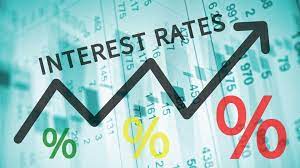What Are Savings Accounts And Savings Bonds
If you are more cautious with your investments but are interested in saving for a rainy day, then savings accounts and savings bonds could be what you are looking for. Both forms of saving tend to be seen as longer-term solutions for putting money aside. Subsequently, they will typically pay a relatively higher rate of interest than compared with other cash accounts. However, there are reasons behind this.
We look into the various aspects of savings accounts and savings bonds. We look at what they are, the various types and some of the benefits but also the disadvantages of having your money there.
What Are Savings Accounts?
First, we will being by looking at savings accounts.
Current accounts are used for day-to-day spending requirements. They are for zapping your card when you pay for a bottle of milk, or (increasingly) for linking up to your Apple Pay wallet. Current accounts are for your direct debits and standing orders.
Savings accounts are different. They are meant to be bank accounts where your money goes in, and does not come out (unless absolutely necessary). A savings account is a store for capital accumulation as you earn interest income.
The crucial difference between a cash (or current) account and a savings account is that the bank will tend to offer you a better rate of interest on a savings account.

Different Types Of Savings Accounts
There are various types of savings accounts available. Varying levels of interest are on offer. The level of access to the funds tends to be a determining factor behind how much interest you can get on the account.
For the bank, what it all boils down to is certainty. If the bank can expect that a savings account will not be plundered by withdrawals too often (or perhaps even at all), it can pay a better rate of interest.
Here’s a list of some types of savings accounts. Just as a comparison for savers in the UK, the Bank of England’s base rate was 4.00% in March 2023.
- Easy-access accounts. Accounts looking for instant access will tend to be the lowest interest rate payers. These are known as “Easy-access” accounts. In March 2023, the best rates available were around 3.00% to 3.20%, although some had a limited number of withdrawals per year.
- Notice savings accounts. These are accounts where you are required to give notice to the bank before making any withdrawals. They typically require a 90-day or 120-day period of notice. These will pay a slightly higher rate of interest than easy-access accounts. In March 2023, rates of around 3.50% were possible.
- Cash ISAs. An Individual Savings Account or “ISA” is a form of savings account where all of the income generated by the savings is considered by the UK Government as being tax-free. Fully accessible cash ISAs pay around 2.5% to 2.75%. However, some cash ISAs are available as fixed-term accounts (these are similar to savings bonds), although these do also come with penalties (see below). The interest available tends to be higher than full-access cash ISAs by around 1%, with the highest rates generating c. 3.6% to 3.75%.
Often savings accounts will come with account limits or maximum monthly deposits. Also, from our observations, it would appear that savings accounts will typically pay interest below the base rate.

What Are Savings Bonds?
Savings bonds are slightly different to savings accounts. In a savings bond, the money is locked away for a specified period, with no access to the funds.
Whereas savings accounts tend not to be time-limited (although some fixed-term accounts are available), savings bonds come with term limits. The terms will typically be limited to between six months and five years. The longer you lock away your money, the better the rate of interest you can expect to receive.
Once the term limit hits maturity, the savings bond expires, paying the total investment plus any interest accrued back to the bondholder.
However, the key difference between savings bonds and savings accounts is the access to funds. As we noted earlier, with savings accounts, the ability to access funds can vary, depending upon the account. However, with savings bonds, your money is locked away without any access.
With many savings bonds, you will not be able to access your money at all. However, some savings bonds are available with access, although these come with big penalties. The penalties are larger for longer-term bonds. Subsequently, it is important to understand potential access issues and penalties before locking up your money away for an extended period.
Different Types Of Savings Bonds
There are a variety of savings bonds that you can invest in. Here are the main ones:
- Fixed-rate bonds – the main form of savings bonds have a fixed rate payable for the term of the bond. Interest is specified at the beginning and is usually payable annually (although some can be quarterly or even monthly). The best rates we could find were between 4% and 4.5%.
- Tracker Bonds – these are savings bonds that track a particular index or rate. This might track moves in the Bank of England base rate or perhaps even the level of inflation.
How Do I Invest In Savings Accounts And Savings Bonds?
There are various ways to invest via savings accounts and savings bonds. Let’s look at how:
- Through a high street bank
All of the high street banks will offer savings accounts.
- Building societies and private banks
Building societies will also offer savings accounts. However, savings bonds tend to only be offered by building societies or private banks.
- Through the government
The UK Government’s NS&I service offers savings accounts, savings bonds as well as premium bonds. Premium bonds are a method of saving money where the amount you save is allocated as £1 bonds. Those bonds are then entered into a monthly draw to win tax-free prizes of anything from £25 up to £1 million.
The Benefits And Disadvantages Of Savings Accounts And Savings Bonds
Now we will look into some of the pros and cons of savings accounts and savings bonds. The two types come with slight differences, so let’s look at them one at a time.
Before we get into the breakdown, there’s a key benefit and a key disadvantage that comes with both savings accounts and savings bonds:
- Benefit for both: Guaranteed security
Savings at UK financial institutions come under the UK’s Financial Services Compensation Scheme (FSCS). 100% of savings up to £85,000 for single account holders or up to £170,000 for joint account holders are protected by the UK Government.
However, if you save through National Savings and Investments (NS&I) then 100% of all savings are covered. There is no limit to the account size. After all, you are quite literally taking your savings bonds with the UK Government, and they are not going to go bust (well, hopefully not…).
- Disadvantage for both: Minimal, low-risk returns and the real terms erosion of inflation
When the level of inflation is above the level of interest received in the bank, this means that in real terms, your money is being devalued. In 2023, with inflation at such high levels, the real terms devaluation of money is a big problem for all forms of savings.
This may even out over the next couple of years if inflation comes down quickly, but the low-risk investments of putting money into a bank account (whether it be a savings account or a savings bond) means that you are restricted in the level of return that may not keep up with inflation.
The Pros And Cons Of Savings Accounts
Starting with savings accounts, we look at some of the benefits first:
- Your savings interest is tax-free (to an extent)
Interest paid on UK savings is tax-free, to a point. It depends upon your income tax bracket, but it is possible to pay no tax up to £5000 of earned interest. For most basic rate taxpayers, it is up to £1000 of interest tax-free. The Money Helper website has more detail on this.
Also, if you can have money under the umbrella of a cash ISA, it is entirely free of tax.
- Access to your money (to an extent)
Savings accounts will tend to allow you access to your money (although there are a small number of accounts where this is not true). Although on some accounts you may have to wait a while for your money, access is at least possible. You should be aware from the outset the level of access.
Now, let’s look at some of the disadvantages of using savings accounts:
- Lower interest rates
Savings accounts will generate a higher rate of interest than current accounts. However, the rates offered by savings accounts will tend to be lower than those available through fixed-term savings bonds.
- Variable interest rates are likely
Savings accounts will tend to be subjected to variable interest rates (unless it is specified as being fixed in the terms and conditions). If the central bank rate changes, the rate on your savings account will likely also change.
This means that although the rates of interest can go up, they can also go down. Although it is unlikely that your savings account rate will go up by the same amount that the central bank rate does. So, whilst you could win from this, you could also lose out if interest rates fall. It creates an element of uncertainty.
- Potential penalties for withdrawals (check the account details to be sure)
On certain accounts, there can sometimes be penalties for withdrawals from savings accounts. Some of the longer fixed-term cash ISAs we found come with considerable penalties. One three-year fixed-term cash ISA account we found came with a penalty of 240 days of interest for early withdrawals. The interest penalties for shorter-term accounts were lower (150 days for two-year accounts and 60 days for one-year accounts).
The Pros And Cons Of Savings Bonds
Here are some of the benefits of savings bonds:
- Best interest rates available on savings
The best rates on saving money come with the fixed-term accounts that savings bonds offer. The longer the term, the higher the rate. The banks give preferential rates to savers willing to have no access to their money over a longer period.

- A guaranteed interest rate
One of the important advantages of savings bonds is their certainty. You know exactly the interest rate that you will receive. It does not change.
The same cannot be said of savings accounts that will sometimes alter the rate of interest (usually when the central bank’s interest rate changes). This does not happen with savings bonds. What you see at the outset is what you receive throughout. It is good for certainty and longer-term savings planning.
Now for some of the disadvantages of investing in savings bonds:
- Your money is locked away
Typically, with savings bonds, for the lifetime of the bond, you do not have access to your money. There can be fees or a loss of interest for early redemption. Subsequently, savings bonds work best for investors that do not need to use the money.
- Penalties for early redemption
This is the problem. If you do need access to your money, you may struggle. Often, the bank does not allow early access, whilst some charge penalty interest. Longer accounts may charge a higher penalty of a specified number of days of interest.
Savings Accounts And Savings Bonds Takeaways
Both savings accounts and savings bonds are good for people looking to accumulate as they put money aside for the future. If it is access to funds that you are after with a decent rate of interest, then savings accounts fit the bill. Whereas if you are happy to lock your money away, without access for a specified period, then the superior interest rates of savings bonds will be what you’re after.
As ever, if you are interested in saving money and are unsure of the best way to plan, we suggest you speak to an independent financial advisor.